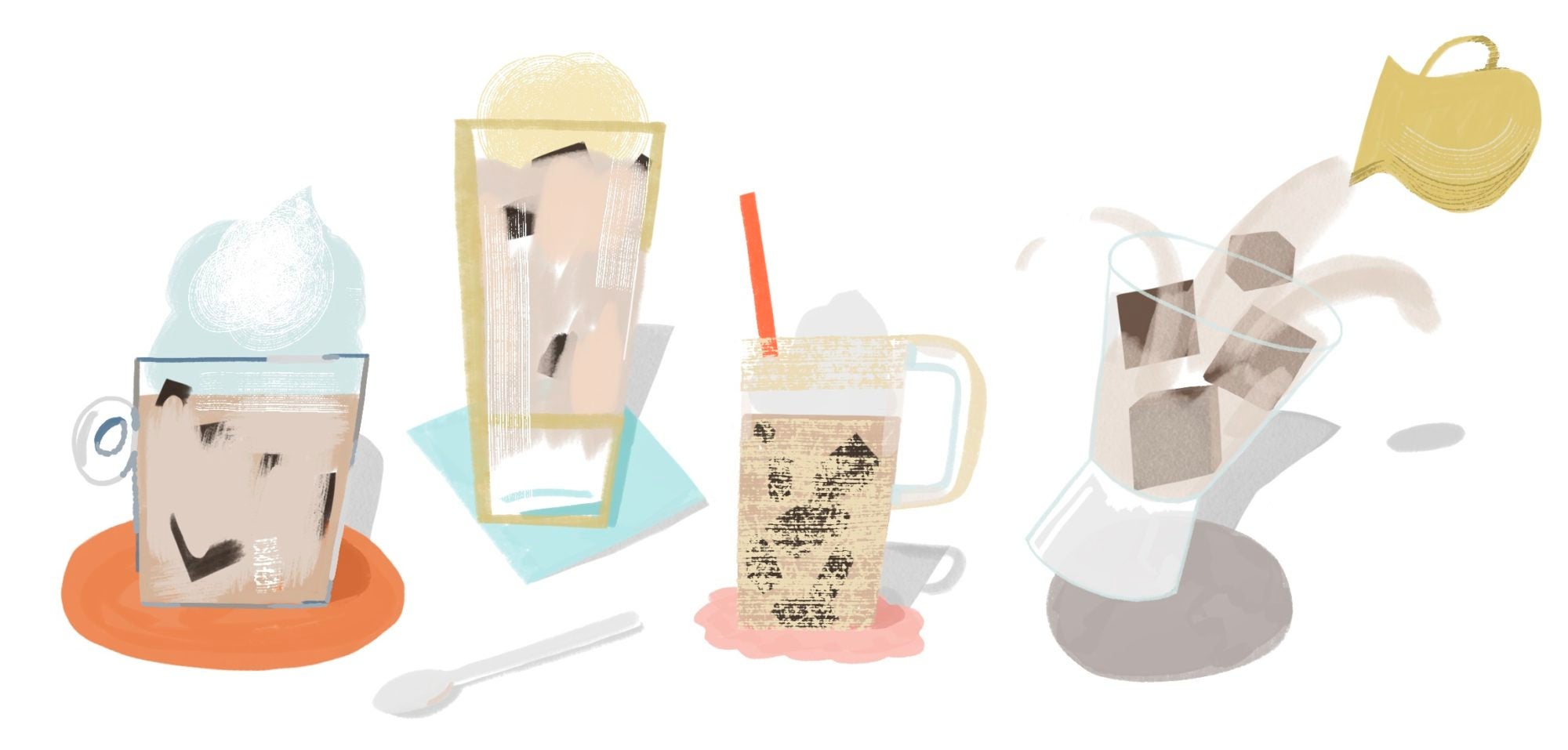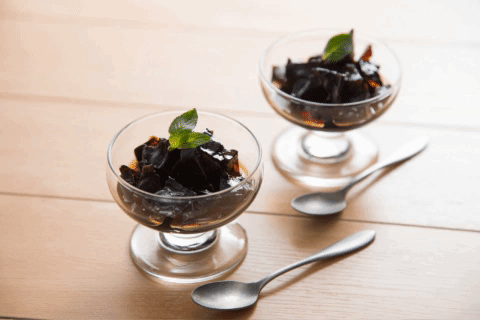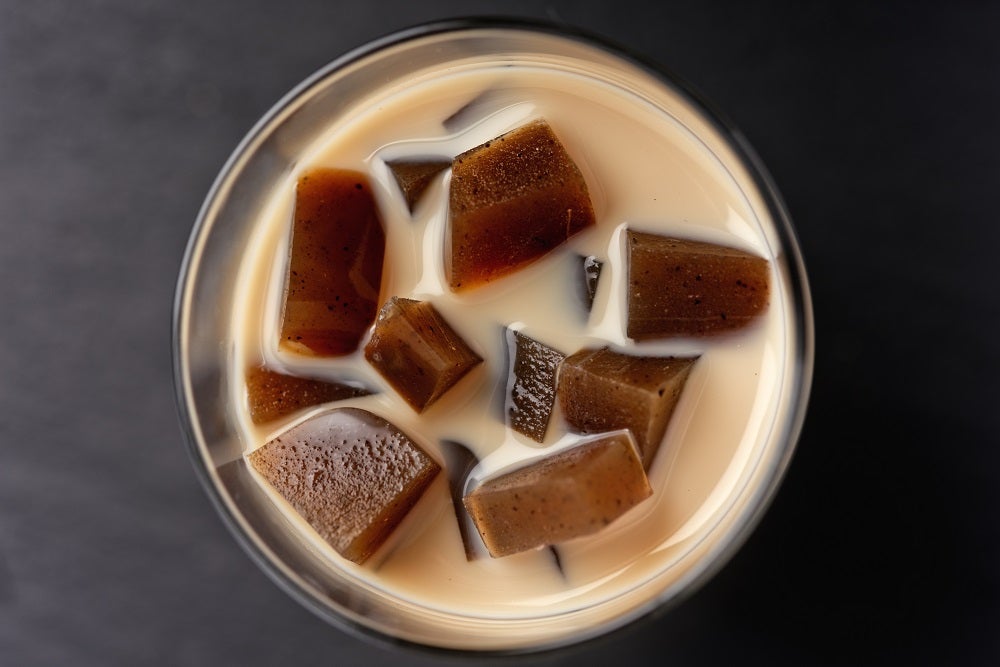
An unlikely pairing of coffee, gelatin, and cream has a following in both Japan and New England.
How do you take your coffee? Cream and sugar? On ice? In Jell-O form? Walk into any 7-Eleven in Tokyo and amongst tuna onigiri and Calbee butter potato chips, you’ll find coffee jelly—a perky dessert made with coffee-flavored gelatin mixed with condensed milk or heavy cream. In the refrigerated desserts section, it’s sold in a foil-sealed plastic cup with a shot of creamer on the side or in a slightly fancier plastic sherbet dish, filled with jelly cubes and milk with a dollop of cream on top. The simple combination of coffee, agar, and cream is sublime—it’s bouncy and chewy, milky sweet and bitter, creamy yet gel-like.
An array of Japanese desserts are made with agar, a vegetarian gelatin derived from seaweed, including bowls of anmitsu (translucent jelly squares topped with red bean paste, fresh fruit, and black sugar syrup) and mizu shingen mochi (the raindrop cake that went viral a few years ago). So it’s a no-brainer that the Japanese have jellified their cups of joe.

First served in Tokyo at Mikado Coffee in 1963, creator Kanasaka Keisuke marketed it as “coffee you can eat.” Coming from a culture that has so many jiggly, jelly-like desserts, it quickly became a popular summertime treat, soon stocked on grocery store shelves and slapped onto café menus. Even Starbucks caught on, serving its own limited-edition coffee jelly Frappuccino, which garnered tons of online buzz back in 2016. Served with a boba straw to slurp it all up, the drink has layers of coffee jelly, vanilla custard, and frozen coffee finished off with whipped cream.
But coffee jelly isn’t just a Japanese thing. It dates back to the early 19th century and has British origins. The first traceable recipe is circa 1817, when the New Family Receipt Book called for the cream to be mixed with coriander seeds, cinnamon, orange peel, and sugar loaf, while a pint of brewed coffee was combined with gelatin extracted from a calf’s foot, then left to set in a large serving dish or individual cups.
Making its way across the Atlantic, coffee jelly has also found a home in New England. For Boston restaurant Durgin-Park, coffee gelatin has been a mainstay on the dessert menu since its opening in 1827, alongside more New England fare, like Yankee pot roasts and lobster stews. Served in large cubes with a mountain of whipped cream, it’s not all that different from what you’d find at a Japanese café, besides the use of gelatin instead of agar. (Gelatin gives way to a lighter, springier texture, whereas agar yields a firmer jelly.)

For many New Englanders, coffee jelly represents nostalgia. A recipe from Genius Kitchen describes it as “a cool shimmering cup of coffee you can eat with a spoon,” saying it was a region-specific dessert growing up in Rhode Island. Commenters had recollections of the dessert from their childhood, reminiscing about the end-of-meal treat their grandparents had always prepared.
Ron Berkowitz, CEO of Legal Sea Foods, has chimed in about his love for the regional dessert, writing in the Boston Herald, “Sometimes I think I’m a relic of the past, especially when the topic of favorite desserts is discussed. I always chime in with ‘Coffee Jello,’ and always get the same reaction—‘Huh?’ I have to explain that it’s an old New England favorite.”
If you don’t happen to find yourself at a Japanese convenience store or historic New England restaurant anytime soon, making coffee jelly at home is very simple. It’s an incredibly forgiving dessert—and foolproof as it’s just a matter of boiling agar or gelatin, instant coffee, sugar, and water together and letting it set before mixing it with your dairy of choice. You can keep it simple and drizzle some condensed milk over it, or slice it into cubes and mix with vanilla ice cream. Or take a cue from Starbucks and throw it into a milky concoction and sip it like bubble tea. There’s no right or wrong way to enjoy it.